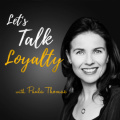Prices and Emotions. Key success factors in competing for consumer budgets limited by inflation.
Inflation has limited the purchasing power of consumers. At the same time, the increase of the costs of living (evidenced in rent and the prices of energy, gas or water) has left family budgets with less disposable income. Additionally, high interest rates resulted in the increased burden of the debt service for the borrowers – especially among those who pay back mortgage loans.
In combination, these factors forced buyers to change their purchasing habits. The fact that the above situation took place directly after the prolonged period of fear and uncertainty, caused first by the pandemic and then by the war in Ukraine, additionally made consumers re-evaluate their priorities and modes of thinking. The price is no longer the main factor driving the purchase decisions. The emotional involvement in the process of decision-making, purchasing and payment plays an equally important role.
Historically, in the times of high inflation and economic slowdowns, it was natural for household members to increase the working hours. Today, the generation of people just entering the job market and those who have been active in it for the past few years, has a different system of values. The idea of work-life balance, the all but crippling fear of “being overworked” and prioritizing health and well-being made consumers more consciously accepting of the budget limitations, and as the result, more selective in their approach towards the purchasing process. All these factors are made even more prominent by the media messaging regarding four-day week and six-hour business day, and reinforced by the free money transfers due to the economic slowdown and the upcoming elections.
What actions can businesses take in order to increase their market share under such economic circumstances? Below you will find my description of the main trends and directions of change in the decision making process of the budget owners, in trade marketing and in marketing which we at i360 observe in the Central and Eastern Europe markets.

Digital and mobile
The longer and more detailed the consumers’ decision making process becomes, which is the result of more detailed offer comparison stage, the more likely the business are to allocate an increasing share of their communication in the digital channels. In the first six months of 2023 the largest share of the marketing budgets (over 20%) was spent on digital marketing, including online advertising, social media and influencer marketing. Other areas of investment in the marketing encompassed sale support (15,6%) and market communication (14,2%).[1] The increase of investment in brand building, consumer loyalty and consumer relations are also worth mentioning.
Shrinkflation
Shrinking the product mass/volume in the unchanged or slightly altered packaging, so that the change is difficult to spot by the consumer. Whether we perceive this as a “soft lie” or something entirely natural in the face of the difficult economic situation, it is hard not to see that it is a manoeuvrer meant to distract the consumer and make them not notice that they receive less for the same price, or sometimes even a higher one. This whole trend is especially present in the low involvement purchase category – products of the relatively low cost barrier, everyday use products – where the purchase is made either by impulse or out of habit.
Unified commerce
The combination of online payment, mobile app payment and point-of-sale payment options. The more channels consumers use, the more valuable they are. According to Ayden Retail Report, 47% of sellers claim that unified commerce increases consumer satisfaction, 46% that it helps sales, and 44% that it has a direct impact on the increase of consumer loyalty. The authors of the cited report claim that globally unified commerce increases the efficiency of the enterprise by 9%.[2]In the Polish market, as many as 58% of consumers declare that they would be more willing to make purchases from a given seller if their loyalty programme worked automatically via their payment card.[3]
Digital wellness
A cost-efficient communication with consumers which results from consumer behaviour insights called “form mindless to mindful”. We can find examples of such activity in mobile apps of loyalty programs of the most popular retailers such as Lidl Plus, Biedronka (so called shakeomatic), Rossman – so called “quick actions[4]”, H&M – special price offer for Premium club members[5]. During the April 2023Loyalty Planet conference focusing on loyalty programmes, which took place in Warsaw, where i360 was a gold partner, such activities were referred to as “hyper-personalisation”. In practice, these are simply short-term offers, personalized by name, and allegedly tailored to the purchasing habits. Their goal is to run everyday promotions for various first need articles, in order to draw the consumer to the store – for instance Biedronka or Lidl magazine, where the information on the particular week’s special offers for various products can be found.
Marketing for the moment
The change of the payment model or subscriptions – the use of the idea from the online service market to be used in retail. Collecting advanced payment for the right to make a repeated purchase, or use of the product, for instance a hot-dog subscription at Amic, coffee subscription at Żabka, toner and ink at HP or dog food at Piesotto, etc. Delayed payment “buy now – pay later”, which global value exceeded USD 156 million[6]. Such activities on one hand respond to the need of loyalising your client, and on the other they allow your client to plan their shrinking household budget ahead.

Strategic partnerships
Getting a “trusted third party” involved into the dialogue with the client – for example veterinarians in the case of pet food. A good example can be a Royal Canin special action, where a veterinarian purchasing food receives a special coupon. They then give this coupon to a consumer, who registers a code on a landing page, and in turn they receives a promotional code to be used at a given clinic. Thus we get the way to activate a consumer while improving the collaboration with a veterinary clinic. Another example of activities in this category is the use of external partners as reward providers – for instance VISA, where as a part of VISA Benefit Programme cyclical high budget actions are realised with partners whose products can be used by consumers every day – e.g. Glovo or Uber. We can also see the tendency in the loyalty programmes to replace points with additional benefits (access to special offers, being able to return a product at any time, free shipping, etc.) Partnerships at a global loyalty programmes level, such as Starbucks and Delta Air Lines, allow getting free miles while buying products at coffee shops. In B2B relations, at earlier stages of the distribution channels, before the product even reaches a store shelf at the point of sale, the key role is played by the collaboration with trade partners – in this area we can observe two main trends: steady budget increase and omnipresent digitalisation: of data circulation, information, documents, decision making process, educations, orders, etc.
Eco-economics
The consumer budget limitations, exacerbated by the prolonged inflation, resulted in the increased awareness of the end buyers’ needs. This new style of thinking is becoming more and more common among the new generation of managers who work for advertisers. It has become a standard to focus on issues that where not so much unimportant for Generation X, but rather transparent – such as carbon footprint, sustainability, inclusion, social involvement, the attempts to meet the needs of minority/niche groups (eco, vegan), as well as shared economics, buying second hand, community building, putting emotions and experiences first, addressing food intolerances and diets in products, are all becoming a standard. All this because consumers expect all the above trends to be available as a part of regular offer and price, without the need of bearing any additional costs. A diminished household budget results in an increased awareness and heightened attention when choosing which products to buy.
Globalisation of activities
When facing budget limitations, the use of solutions on more than just one market becomes a natural cost optimisation method. Kaufland Card[7], which gained over two million participants in just two months since its launch[8], is a good example here. Globalisation also makes it cheaper to maintain a given solution. Due to solution scalability and common management of various markets, enterprises can lower their operational costs. For example, the central management of the loyalty programme for several countries can lead to administration or technology cost reduction. Interestingly though, the lowest price is not a deciding factor in the choice of a supplier, but the combination of the comprehensive activity combined with good personal relations of between both parties.
- Source: Racjonalizm nieoczywisty marketerów [Unapparent Rationality of Marketers], CIMO Standards & Foresight, Chartered Institute of Marketing Officers – Standards & Foresight study report – May 2023, p. 22 and 42 ↑
- Source: Adyen Retail Report 2022. Learn the industry forming trends, at p. 12. “Businesses that consistently perform the best are those that can combine their physical and digital worlds to create a fluid, channel-agnostic experience which prioritizes the customer. This is unified commerce, the next level up from omnichannel sales. Omnichannel businesses are great at delivering cohesive cross-channel experiences to their customers. But behind the scenes, backend systems are often unconnected, complicating cross-channel reconciliation, limiting the experiences you can offer customers and hindering your operational agility across multiple channels and regions. With unified commerce, payments from all your channels — online, in app, and in store — feed into the same system. This gives you more targeted, data-driven decision making, and a more seamless, flexible experience for customers. It also keeps you agile since you can add new channels and support new customer journeys quickly because everything’s connected.” ↑
- Id. at p. 17. ↑
- Rossman conducted “Quick actions”. Twice a week it gives away a batch of vouchers (40,000) with a discount for a given product. Such a voucher is redeemable for two days. Additionally, for one month (from the beginning of May the beginning of June) there is a calendar with coupons for given products available in the app. Coupons are valid for three days. Additionally, for those who actively use coupons, every now and again, there is a coupon for toothpaste for PLN 0,01, where the regular price is PLN 23.
↑ - H&M – Premium club members (those who spent a total of minimum PLN 800 over a year) are given different prices than regular customers, and special offers are made available to them sooner. The example is a recent -20% action for the entire offer for Premium club members, while the “ordinary” customer had access only to a discount for selected products. In addition, there are coupons in the app for everyone, also collaborations with other brands (coupon for PLN 600 for the Electrolux food processor) ↑
- Euromonitor International. Top 10 Global Consumer Trends 2023. p. 34 ↑
- See: https://www.kaufland.pl/kaufland-card.html ↑
- Source: https://www.wiadomoscihandlowe.pl/artykul/kaufland-card-z-mocnym-startem-2-mln-uczestnikow-programu-lojalnosciowego-w-niespelna-dwa-miesiace ↑
0


